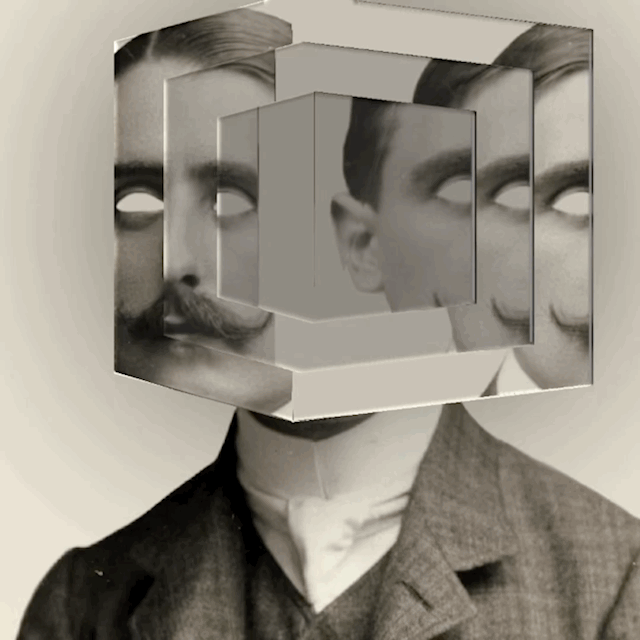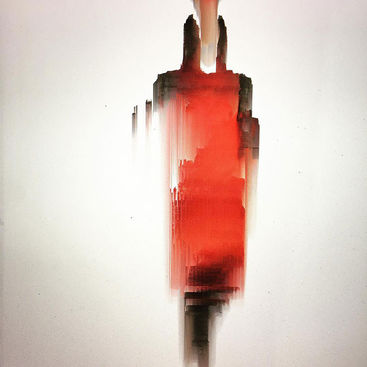For my further artistic practice I would like research the accelerating effect the implementation of digital technology and algorithms has on an individual.
For my further artistic practice I would like research the accelerating effect the implementation of digital technology and algorithms has on an individual.
Artworks and Processes
Artworks and Processes
Artworks and Processes
Artworks and Processes
Here is a heading
Ich bin ein Textabschnit. Klicke hier, um deinen eigenen Text hinzuzufügen und mich zu bearbeiten. Ich bin ein Textabschnitt. Klicke hier, um deinen eigenen Text hinzuzufügen und mich zu bearbeiten.Ich bin ein Textabschnitt. Klicke hier, um deinen eigenen Text hinzuzufügen und mich zu bearbeiten.Ich bin ein Textabschnitt. Ich bin ein Textabschnitt. Klicke hier, um deinen eigenen Text hinzuzufügen und mich zu bearbeiten. Ich bin ein Textabschnitt. Klicke hier, um deinen eigenen Text hinzuzufügen und mich zu bearbeiten.Ich bin ein Textabschnitt. Klicke hier, um deinen eigenen Text hinzuzufügen und mich zu bearbeiten.Ich bin ein Textabschnitt.
Here is a heading
Ich bin ein Textabschnit. Klicke hier, um deinen eigenen Text hinzuzufügen und mich zu bearbeiten. Ich bin ein Textabschnitt. Klicke hier, um deinen eigenen Text hinzuzufügen und mich zu bearbeiten.Ich bin ein Textabschnitt. Klicke hier, um deinen eigenen Text hinzuzufügen und mich zu bearbeiten.Ich bin ein Textabschnitt. Ich bin ein Textabschnitt. Klicke hier, um deinen eigenen Text hinzuzufügen und mich zu bearbeiten. Ich bin ein Textabschnitt. Klicke hier, um deinen eigenen Text hinzuzufügen und mich zu bearbeiten.Ich bin ein Textabschnitt. Klicke hier, um deinen eigenen Text hinzuzufügen und mich zu bearbeiten.Ich bin ein Textabschnitt.
David Szauder

© Szauder, Sophia.
“I’m not modifying the source of the image, I’m modifying the surface of the image.”
– David Szauder
experimenting with error
living with imperfection
parameters of errors
imperfect nature of human memory
glitch codes
self-generated memories
memory fragments

Artists website → http://www.davidarielszauder.com/
Media artist David Szauder (b. 1976, Hungary) is a multidiciplinary artist and curator who has participated in a variety of international projects as an artist and curator. Has been leading workshops about interactive media in Berlin and in Budapest since 2010 and he is a visiting lecturer at the HFF Potsdam. (Designyoutrust, 2018; Szauder)
Selection of Szauders glitched works

© ENTREVISTA DAVID SZAUDER: ASSIMILATION OF ERROR
Transcribed Passages
(0:05 – 0:10)
“Since we have computer we know that there always exists a problem and an error.
(0:46 – 1:08)
“The good thing is if you understand the error. You need to understand the error because without error there is no digital art. Error is part of digital art. There is no perfect computer system.”
(3:04 – 4:06)
”I just started to play with two planes (…) and there was the lines. Ok, lets add some textures to this – anything – and it became much interesting what I can do how I can combinate. This is how I incorporate error. What I am trying to say: That experimenting is a really important thing and every artist is experimenting. (…) I am incorporating error and sometimes I am directly looking for this errors because this is something that other people cannot find easily.”
(4:06 – 4:31)
“The day where the computer will be a perfect instrument without any error … do you think its realistic? Do you think there existst such thing as the perfect something - there is no perfection, there is always imperfection. But we should live together with this imperfection.”
(5:17 – 5:34)
“To incorporate this error into my work. If I find it I stabilize it and experimenting, trying different things. I call it parameters.”
Failed Memory Series
2013
Failed Memories Series, 2013
His latest series is inspired by the parallels he sees between human and digital memory. He explores the imperfect nature of human memory by glitching old photographs and adds short narratives to accompany each photo, which often give insight why the subject appears in such way and how their mind has been altered. To evoke these he applies different glitch codes he created to the figures in old photographs, usually focusing on their heads and faces. Using Pixelmator and other image editing software, he’s able to isolate the foreground and background in the images, and has more control over the composition than if he were to employ more classic databending techniques such as adjusting the file data with a hex editor. (Jablotschkin; Turn, 2013)


Suzana's Blindness. "One day suzana went blind, this is her last inner memory…"

Solid Afternoon. "These friends discussed Metaphysics all that afternoon, the discussion was too theoretical, so their memory was modified in a physical way."
“I am inspired by the parallels what I see between human memory and computer memory: Our brains store away images to retrieve them later, like files stored away on a hard drive. But when we go back and try to re-access those memories, we may find them to be corrupted in some way–glitched, if you will. When we see a picture (photo) we are able to remember the details, but only for [a] short period. In [the] long term we start to lose parts of the details and instead of these lost fragments we fill the gaps with our self-generated memories, memory fragments.” (Szauder)

Key Takeaways
David Szauder's work is relevant to me because of his depth of digital experiments. He uses the glitch to transform it into a tool with which he can create any kind of distortion.
The unconditional will to imperfection is based on the imperfection of man and his ability to remember. I find it interesting how he creates new memories and takes subjects out of their intended context to transform them. His Failed Memories series particularly appeals to me because he balances the glitch with the original, which is balanced in limbo.
References
Designyoutrust (2018) “Failed Memories”: The Superb Glitchy Digital Art Of David Szauder. Available at: https://designyoutrust.com/2018/06/failed-memories-the-superb-glitchy-digital-art-of-david-szauder/ (Accessed: 22.05.22)
Jablotschkin, E (no date) Failed Memory by davidszauder. Available at: https://www.ignant.com/2013/10/28/failed-memories-by-david-szauder/ (Accessed: 22.05.22)
Turn, V (2013) Glitched Vintage Photos Offer An Artistic Perspective On Our Fragmented Memory. Available at: https://www.vice.com/en/article/nz4jxq/glitched-vintage-photos-offer-an-artistic-perspective-on-our-fragmented-memory (Accessed: 22.05.22)










